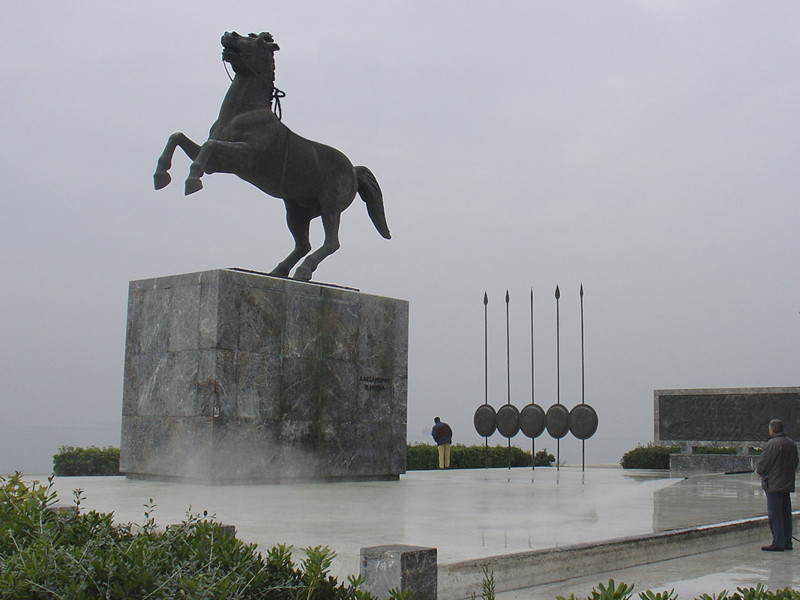Luchezar Boyadjiev (b. 1957, Sofia) lives and works in Sofia. He graduated in History of Art from the National Art Academy, Sofia, in 1980 and continued his artistic education while living in New York City during the 1980s. Boyadjiev began his artistic career after the fall of the Berlin Wall in 1989. His practice explores a personal interpretation of social processes, the relationship between private and public space, urban visuality, and the contemporary world divided between utopia and anti-utopia. He works across installation, photography, drawing, objects, text, video, and performative lectures.
Boyadjiev is one of the most internationally visible contemporary artists from Bulgaria. His solo exhibitions include On Vacation... (Corpus Equidae, 2004–2024) at the National Gallery / Kvadrat 500, Sofia (2025), curated by Ovül Durmuşoğlu and Joanna Warsza; Urban Daydreaming at ICA-Gallery, Sofia (2023); Public Scale, Private Size at Structura Gallery, Sofia (2023); Dystopian Cozy at Sariev Contemporary, Plovdiv (2023); Re-building the World of Images. 1991–2019 at MOMus Contemporary, Thessaloniki, Greece (2020); and the retrospective Sic transit media mundi / The Present is Too Short and Rather Tight/ at Sofia City Art Gallery (2018), for which he received the Sofia Municipality Award for outstanding achievements in the field of visual arts.
He has participated in numerous international biennials and major group exhibitions, including the 4th Autostrada Biennial in Prizren, Kosovo (2023); Manifesta 14 in Prishtina, Kosovo (2022); The Influencing Machine at MCA Ujazdowski Castle, Warsaw (2022) and at Nikodim Gallery, Bucharest (2019); Economize! On the Relationship of Art and Economy and Symptoms of Society in Guangdong and Zhejiang, China (2017); Cold Wind from the Balkans at PERA Museum, Istanbul (2016); Low Budget Utopias at Moderna Galerija, Ljubljana (2016); Grammar of Freedom at MCA Garage, Moscow (2015); Inside Out at City Gallery, Ljubljana (2015); Art for Change 1985–2015 at Sofia City Art Gallery (2015); Disconsent at the Ancient Bath, Plovdiv (2014); Economics in Art at MOCAK, Cracow (2013); The Best of Times, the Worst of Times at the 1st Kiev Biennial (2012); The Eye Never Sees Itself at the 2nd Industrial Biennial, Ekaterinburg, Russia (2012); and The Global Contemporary at ZKM, Karlsruhe, Germany (2011), among many others.
His work has been widely recognized with awards including the Grand Prix for his participation in Onufri’98. Permanent Instability at the National Gallery of Art, Tirana, Albania, and the Art Criticism Award of the Union of Bulgarian Artists in 1989.
-
Luchezar Boyadjiev belongs to that first generation of artists who laid the groundwork for Bulgaria’s contemporary art scene during the mid-1980s. Trained as an art historian and theorist, Boyadjiev set out to create art that questions traditional symbols of power and religion as well as the social conditions in his home country with respect to global developments and the virtual world. His analysis of the situation in the Balkans as an interim zone or Lacanian “Other” moved him to problematize the notion of transparency in the region in his catalogue text for the 3rd Istanbul Biennial in 1992, which was the first in which Bulgarian artists participated. Ever since, Boyadjiev’s work has taken up ironically critical stances toward history and social deployment.
His works from the 1990s revolve around religious symbols and beliefs, which the artist deconstructs in a variety of installations. “Fortification of Faith” from 1991, for instance, tells the story of Jesus and his twin brother—thereby forming links with Bulgarian traditions and iconography. In his drawing series “Philosophical Cemetery” from 1992, Boyadjiev attributes coffins to different intellectuals and creates mythical symbols for those who influenced democratic as well as totalitarian modes of thinking. Boyadjiev also frequently constructs utopias out of the various belief systems, an undertaking that—especially after the fall of the Berlin Wall—led individuals to questioning their identities in search for a possible future. The latter is manifested in the photographic project based on the installation “Chairs and Symbols. A Project for Peaceful Co-identification” (1995–2001), a series of eleven color photographs in which constellations of red and black chairs are deployed in conference rooms to forms a cross, a sickle or a swastika, referring to media gatherings by denoting the agency of ideology as such.
Some recent works deal with changing urban structures in a globalized world, visualizing images and text inscribed by the artist into culturally significant sites. Here, Boyadjiev addresses the notion of billboards and other advertising in public space as present-day icons, surrogates for formerly religious beliefs. The advent of the Internet has also provided a means by which the artist has critically altered spatial paradigms: these are stripped of their ideological or monumental significance, but still remain as sites that reflect past, present and personal forms of belonging. – Walter Seidl
